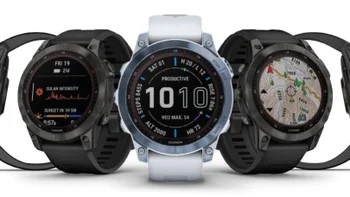Garmin may introduce solar-charging smartwatches with better outdoor visibility

There is nothing nicer than having a smartwatch that has both a long battery life and a vibrant display. Such a smartwatch will enable you to use it for long periods of time without recharging it, and it will give you a better experience while using it during your workout.
Garmin also seems to think as we do. The Swiss company registered a new smartwatch OLED display patent, which may enable future Garmin smartwatches to have a long battery life and be able to give you that vibrant OLED experience (via TechRadar).
In the document for Garmin's OLED display patent, we see that the idea behind the new patent is for Garmin to use "energy-collecting display modules" to charge its future watches. According to the patent, these "photovoltaic regions" would be scattered between the smartwatch's OLED display subpixels.
Charging smartwatches by using sunlight is nothing new for Garmin. The Swiss company already uses similar technology called "Power Glass" in some of its watches, like the Fenix 7 and the Instinct 2. Smartwatches equipped with Garmin's Power Glass lens use a layer of photovoltaic material over their memory-in-pixel (MIP) displays.
So, if Garmin decides to implement its new OLED display patent, this may mean that the downsides of the current Garmin smartwatches with solar charging may become a thing of the past. But the problem with new patents is that you never know if the company will indeed decide to implement the patent into a real consumer product.
Garmin also seems to think as we do. The Swiss company registered a new smartwatch OLED display patent, which may enable future Garmin smartwatches to have a long battery life and be able to give you that vibrant OLED experience (via TechRadar).
Charging smartwatches by using sunlight is nothing new for Garmin. The Swiss company already uses similar technology called "Power Glass" in some of its watches, like the Fenix 7 and the Instinct 2. Smartwatches equipped with Garmin's Power Glass lens use a layer of photovoltaic material over their memory-in-pixel (MIP) displays.
However, MIP displays have a significant downside compared to OLED displays. Although they limit power consumption by refreshing only the pixels that need to be changed, they have a lower refresh rate and poor visibility in direct sunlight.
So, if Garmin decides to implement its new OLED display patent, this may mean that the downsides of the current Garmin smartwatches with solar charging may become a thing of the past. But the problem with new patents is that you never know if the company will indeed decide to implement the patent into a real consumer product.










Things that are NOT allowed: